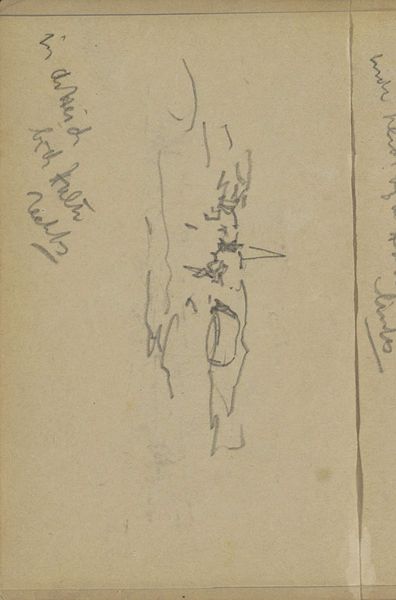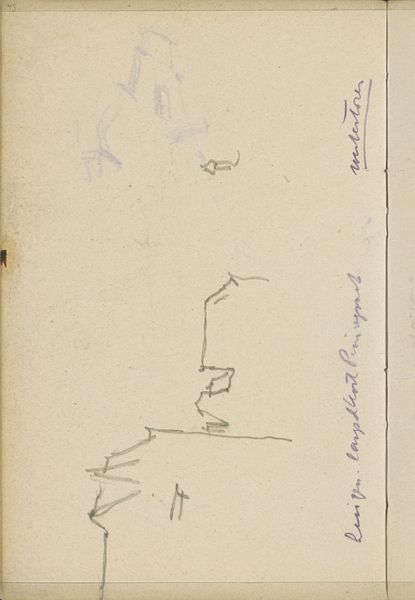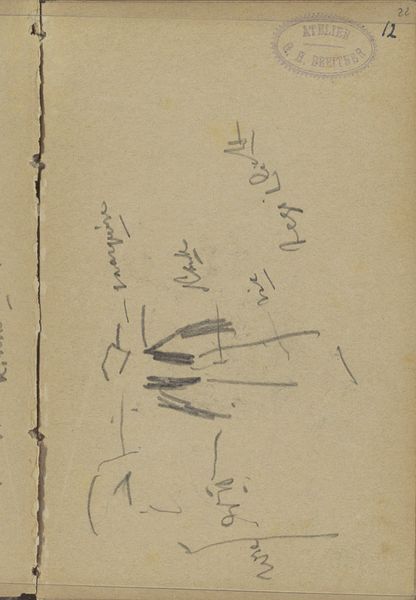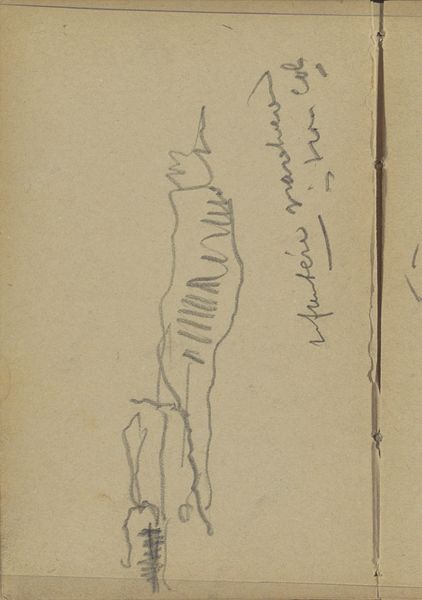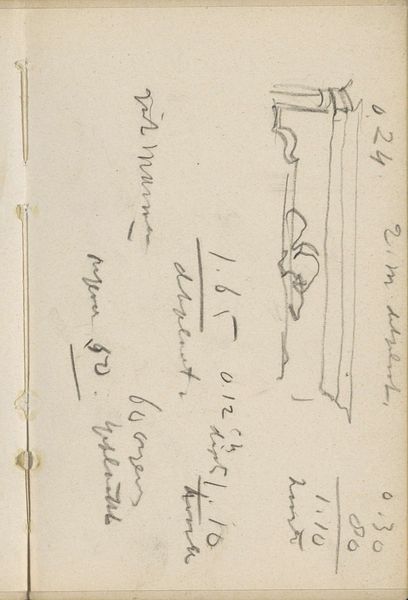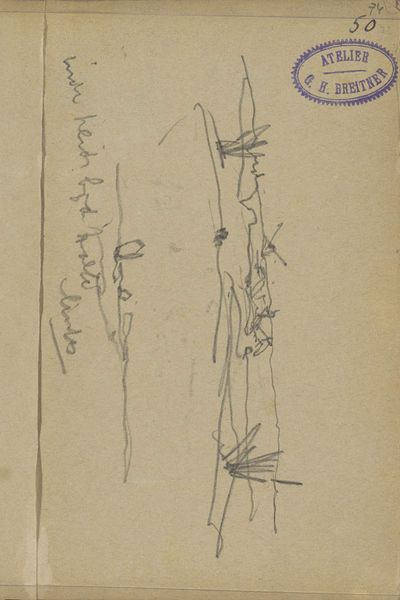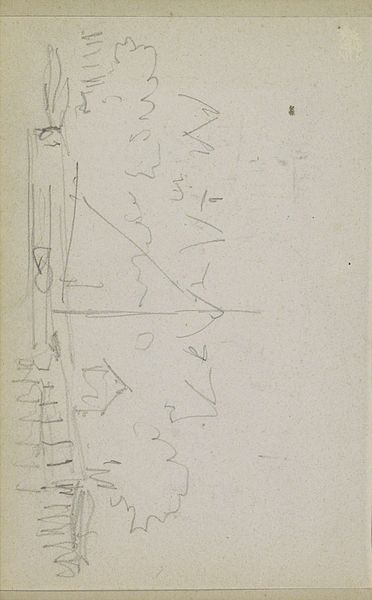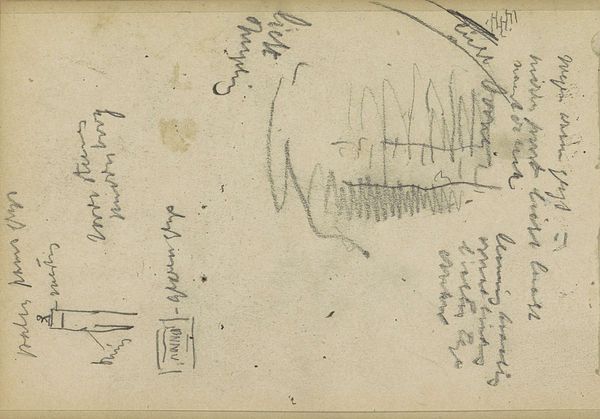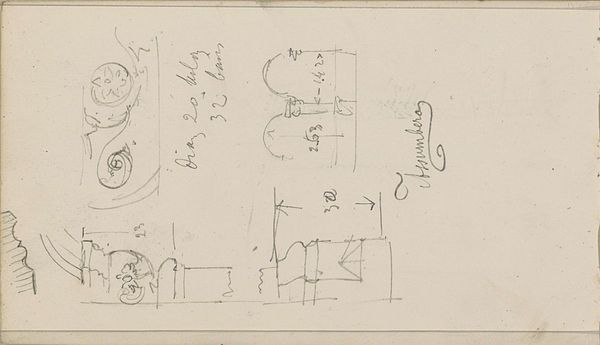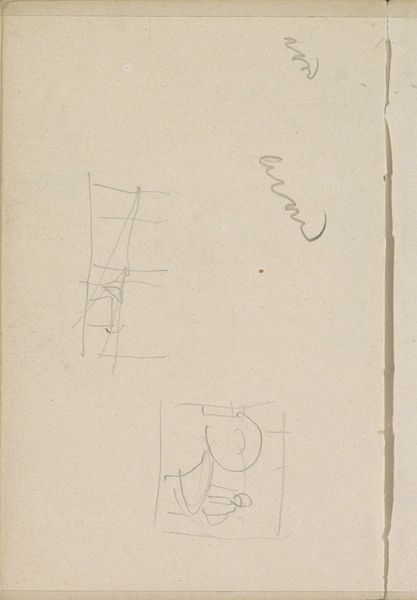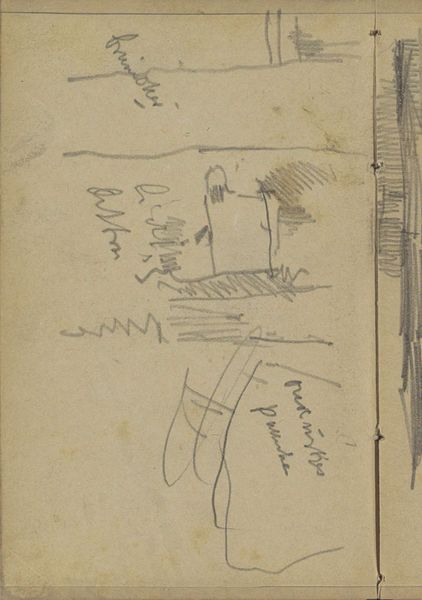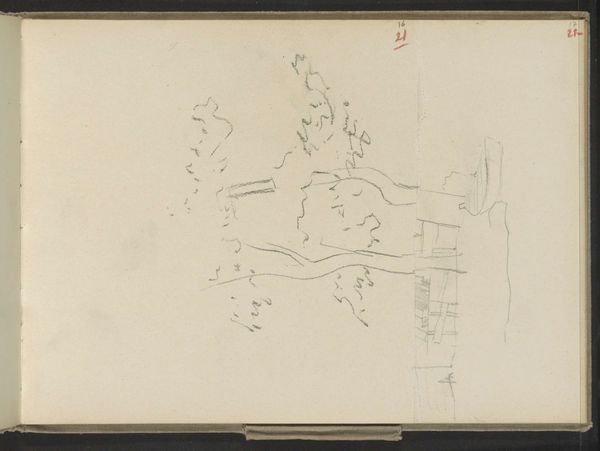
drawing, pencil
#
drawing
#
amateur sketch
#
light pencil work
#
impressionism
#
sketch book
#
landscape
#
personal sketchbook
#
idea generation sketch
#
sketchwork
#
pencil
#
sketchbook drawing
#
storyboard and sketchbook work
#
sketchbook art
#
realism
#
initial sketch
Copyright: Rijks Museum: Open Domain
Curator: Looking at this pencil drawing, one might easily overlook its significance. What jumps out at you? Editor: Stark simplicity, definitely. There's almost a ghostly quality to the buildings depicted with such spare lines. What more can you tell me about it? Curator: This is "Gezicht op een straat in Enschede," or "View of a Street in Enschede," created by George Hendrik Breitner between 1887 and 1891. What strikes me is how this relatively unknown work exemplifies Breitner's wider material concerns and practice. This sketchbook page provides a fascinating view of his initial processes of conceiving art. Editor: So, we are viewing a mere preliminary sketch. In what way does this relate to other urban paintings of his? Curator: It does. These sketches allowed for capturing everyday moments of working-class urban life from the back streets, boulevards, and bridges of cities like Amsterdam and Enschede. In my opinion, these scenes document how capitalism and modernity shifted and changed social interactions during this time. Breitner saw the making of initial studies like these not just as mere compositional studies but, crucially, as initial aesthetic, documentary and entrepreneurial opportunities. Editor: Interesting. Given this, where does this drawing sit within the context of his practice and public perception? Curator: Although just a sketch, it gives key insight into his creative labor. Works such as these help demystify the making of art. The urban experience that Breitner delivers across all mediums connects strongly to those he mixed with and was known to assist and document photographically and socially. That this piece resides now in the Rijksmuseum underscores that the traditional canon has opened up and come to include not just finished works, but the art of everyday life and practice. Editor: So by exhibiting these pieces, art institutions are revealing to the public, as it were, the inner workings of artmaking itself. On that note, what final thoughts do you have on this work? Curator: Seeing it from that view allows a glimpse of a painter thinking, building his vocabulary of form, which gives it resonance beyond just the subject matter. Editor: Absolutely, it is a fantastic reminder that every great piece begins somewhere.
Comments
No comments
Be the first to comment and join the conversation on the ultimate creative platform.
